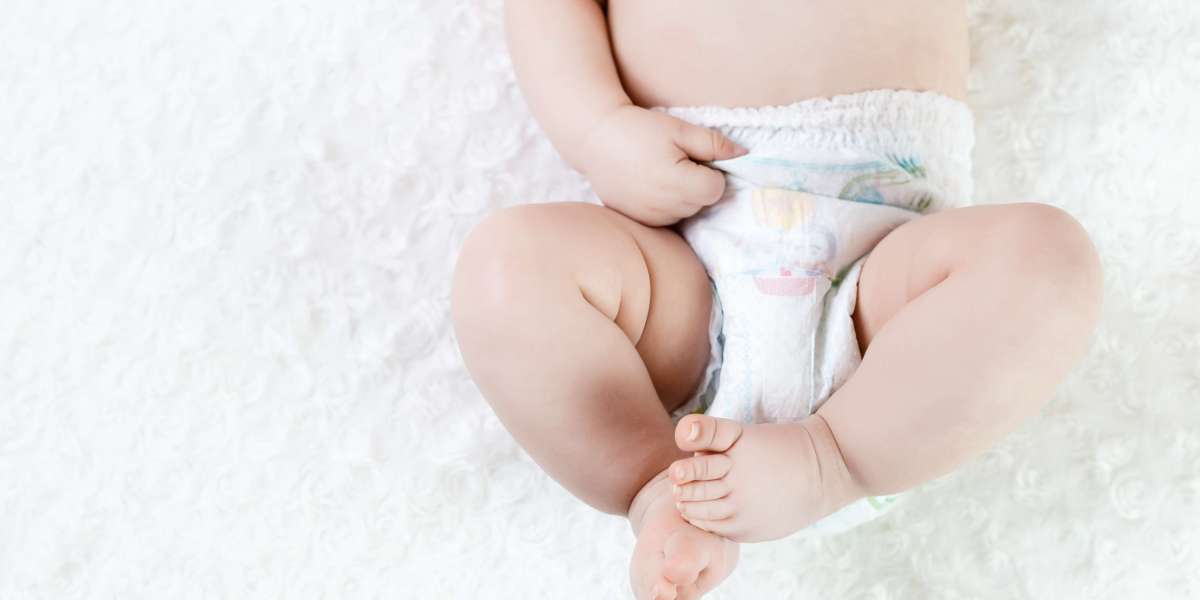As new parents, it’s natural to want to do everything possible to protect your baby’s delicate skin. However, with so much information available—both online and from well-meaning friends and family—separating fact from fiction can be challenging. When it comes to diapering and baby skin health, there are many myths that can cause confusion and even lead to practices that could harm your baby’s skin. Understanding the truth behind these myths is essential for ensuring your baby’s skin remains healthy, soft, and irritation-free.
In this blog, we’ll debunk some common baby skin health myths and help you make informed decisions when it comes to caring for your little one’s skin.
Myth 1: You Should Change Your Baby’s Diaper Only When It’s Dirty
One of the most widespread baby skin health myths is the idea that you only need to change your toddler diapers when it’s visibly soiled. While it might seem like a good way to save time and resources, this myth can lead to prolonged exposure to moisture, which can cause diaper rashes, irritation, and even infections.
Truth: It’s important to change your best newborn diapers frequently, even if it’s not soiled. Urine and stool can irritate the skin, and leaving a diaper on for too long can create a breeding ground for bacteria. To protect your baby’s skin, change the diaper every two to three hours during the day, or more frequently if needed. Overnight, consider using super-absorbent diapers to keep moisture away from your baby’s skin.
Tip: Keep an eye on signs that your baby’s diaper needs changing, such as fussiness or a noticeable odor. Avoid waiting for your baby to be uncomfortable before changing them.
Myth 2: Diaper Rash Is Always Caused by Poor Hygiene
Another common misconception is that diaper rash is a direct result of poor hygiene or not changing your baby’s diaper often enough. While hygiene plays a role in preventing diaper rash, there are other factors at play.
Truth: Diaper rash can be caused by many factors, including friction, exposure to urine and stool, sensitivity to certain chemicals or materials in the diaper, or even changes in diet. In fact, some babies may develop diaper rash even if they are changed frequently and kept clean. Babies with sensitive skin are particularly prone to rashes, and certain brands of diapers or wipes may not be suitable for your baby’s skin.
Tip: If your baby experiences frequent diaper rash, try switching to a different brand of diaper or wipes, preferably those designed for sensitive skin. Also, consider using a barrier cream to protect your baby’s skin from irritation.
Myth 3: All Baby Wipes Are Safe for Sensitive Skin
Baby wipes are an essential tool for cleaning your baby during diaper changes, but not all wipes are created equal. Some parents believe that all baby wipes are safe for babies with sensitive skin, but this isn’t always the case.
Truth: Many baby wipes contain alcohol, fragrances, and other harsh chemicals that can irritate baby skin health. Even wipes labeled “hypoallergenic” may not be suitable for all babies. For babies with sensitive skin, it's best to choose wipes that are alcohol-free, fragrance-free, and made with natural or organic ingredients.
Tip: Look for baby wipes that are labeled specifically for sensitive skin. If you’re unsure, you can use a damp washcloth with water instead of wipes to clean your baby’s skin.
Myth 4: Cloth Diapers Are Always Better for Baby Skin Than Disposable Diapers
Cloth diapers have long been seen as the “natural” alternative to disposable diapers, but many parents believe that cloth diapers are always better for baby skin health. While cloth diapers do have their advantages, they aren’t necessarily the best choice for every baby.
Truth: Both cloth and disposable diapers can be safe for your baby’s skin, as long as they are used correctly. Cloth diapers may be made from natural fibers and may reduce exposure to chemicals, but they also require more frequent changing and proper cleaning. On the other hand, disposable diapers are designed to wick moisture away from the skin, which can help reduce the risk of diaper rash if changed frequently.
Tip: The best choice depends on your baby’s skin and your lifestyle. If you prefer cloth diapers, make sure to change them frequently, and wash them thoroughly between uses. If you opt for disposable diapers, choose a brand designed for sensitive skin and change your baby’s diaper regularly.
Myth 5: Diaper Rash Creams Should Only Be Used After a Rash Appears
It’s common for parents to wait until a rash appears before using diaper rash creams. However, this delayed response is actually a baby skin health myth that can lead to more severe rashes and discomfort.
Truth: Preventative care is key to avoiding diaper rash. Using a diaper rash cream or ointment as a preventative measure, even when no rash is visible, can create a protective barrier against irritation from urine and stool. If your baby is prone to rashes, applying a thin layer of cream during each diaper change can help keep their skin healthy.
Tip: Look for a diaper rash cream with zinc oxide or petroleum jelly, as these ingredients are effective at creating a barrier between your baby’s skin and moisture.
Myth 7: Baby’s Skin Doesn’t Need Moisturizer
Some parents may assume that a baby’s skin, especially if it’s free of rashes or dryness, doesn’t need extra moisturizing. This is a common misconception, especially in climates where the weather is humid.
Truth: Babies' skin is prone to dryness, especially in the first few months, as it continues to develop and adjust to the outside world. Even if your baby doesn’t have visible dry patches, their skin still needs moisturizing to keep it soft and hydrated. Gentle, fragrance-free baby lotions or oils can help nourish and protect their skin.
Tip: Apply a moisturizer after your baby’s bath while their skin is still slightly damp to help lock in moisture.
Conclusion
There are many baby skin health myths that can lead parents to make decisions that may not be in the best interest of their baby’s skin. By understanding the truth behind these myths, you can make better-informed choices when it comes to diapering, skin care, and overall skin health for your little one. Whether you choose cloth or disposable diapers, baby wipes, or creams, always prioritize your baby’s comfort and well-being, and don’t hesitate to seek advice from your pediatrician if you’re unsure about any aspect of baby skin care. With the right practices and products, you can keep your baby’s skin happy, healthy, and rash-free.Baby powder has been a staple in many households for years, but the use of talcum powder, in particular, has been the subject of much controversy. Many parents still believe that baby powder is an essential part of diapering.
Truth: Talcum powder is not recommended for babies with sensitive skin due to the potential health risks. Inhalation of talc particles can cause respiratory issues, and when used in the diaper area, powder can irritate the skin. Instead, use a gentle, cornstarch-based powder if needed, but it’s often best to skip powder altogether.



